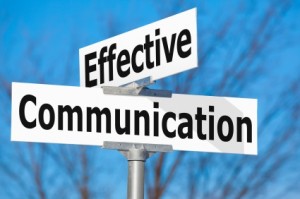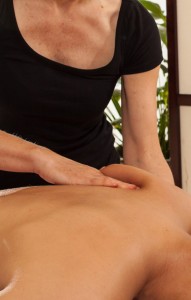 Chances are, if you’ve been practicing massage for a while, you are a skilled, effective, and caring practitioner and that you put yourself forward as such with a professional demeanor and appearance. But what about your massage room? Have you ever wondered what it says to your clients about you? Try doing this quick audit the next time you have a few minutes:
Chances are, if you’ve been practicing massage for a while, you are a skilled, effective, and caring practitioner and that you put yourself forward as such with a professional demeanor and appearance. But what about your massage room? Have you ever wondered what it says to your clients about you? Try doing this quick audit the next time you have a few minutes:
- Look at the client area. Is there a little tray clearly set out for their jewelry or cell phone? Or, is your water bottle, lotion, and knick-knacks in that space? With those there, it isn’t clear to the client whether or not this is a place for their belongings.
- Check your massage table. Does it look nice and crisp, with the sheets pulled tight like in a 5-star hotel room? Or, does it look like somebody’s been rolling around on there and you might have forgotten to change the sheets?
- Look through the cradle. What do you see? Is it a nice clean floor or carpet? Or, can your client see a garbage can, your shoes, and some old smelly socks tucked in the corner?
- Turn over, and look up. Is the ceiling in good repair? Or, is there a harsh light fixture that could be softened by tacking up a scarf? While your client might close their eyes for most of the session, this is the first thing they’ll see when you’re done.
- Check your plants or flowers. What kind of shape are they in–healthy & green? Or, are there some yellowing leaves or signs of plant-neglect? If so, know that it can imply you don’t care.
- Look at the floors. Are they clean and neat? Or are there pieces of paper, tissues, or other types of debris strewn around the room?
Of course we all know how important it is to have a clean, welcoming space, and yet, you’d be surprised how many times when you go into a massage room what you find is far from a stellar and welcoming presentation. So, my motto is:
“If you can’t show it off, don’t show it to anyone. Tidy up.”
If you wouldn’t take somebody on a first date to this massage room, or if you wouldn’t show it off proudly to your mom, then it’s time to get to work and make sure your room is sending the right message.

 Many massage therapists worry about providing pleasant service, but clients can be more nervous than we are. After all, it can feel very vulnerable, lying there disrobed on a table for an hour, having a therapist working hard on them. Some clients even worry that they’re somehow inconveniencing or overworking their therapist. This concern comes out in questions such as, “how many people have you seen today?” or kind statements like, “it must be hard to do this job.” One of the best remedies to ease your clients’ anxiety is to overtly ask the client to come see you again. This reassures them that not only do you not feel put out by your work, but you enjoy it and look forward to it and to building a good rapport with them. It’s important to keep in mind that, beyond good clinical massage technique, clients are also looking for a connection or relationship. It can be easy to overlook that critical aspect and think that you can let your massage speak for itself, but a few simple words to the effect that you’d like to see the client again makes clear that you are inviting that connection. A lot of therapists will use words something like “It was good to work with you” or “I hope you come back to see me again.” While this is better than saying nothing, it is very passive and doesn’t really speak for your genuine desire to have the client come back.
Many massage therapists worry about providing pleasant service, but clients can be more nervous than we are. After all, it can feel very vulnerable, lying there disrobed on a table for an hour, having a therapist working hard on them. Some clients even worry that they’re somehow inconveniencing or overworking their therapist. This concern comes out in questions such as, “how many people have you seen today?” or kind statements like, “it must be hard to do this job.” One of the best remedies to ease your clients’ anxiety is to overtly ask the client to come see you again. This reassures them that not only do you not feel put out by your work, but you enjoy it and look forward to it and to building a good rapport with them. It’s important to keep in mind that, beyond good clinical massage technique, clients are also looking for a connection or relationship. It can be easy to overlook that critical aspect and think that you can let your massage speak for itself, but a few simple words to the effect that you’d like to see the client again makes clear that you are inviting that connection. A lot of therapists will use words something like “It was good to work with you” or “I hope you come back to see me again.” While this is better than saying nothing, it is very passive and doesn’t really speak for your genuine desire to have the client come back. Every field has its own language or lingo, and massage is no different. We all know about the importance of genuinely inviting
Every field has its own language or lingo, and massage is no different. We all know about the importance of genuinely inviting  Before a massage session begins, it’s not uncommon for a massage therapist to palpate their client to get a feel for the quality of their muscle tissue and where to focus their treatment. This allows the therapist to understand what techniques to use and perhaps get an indication of the underlying problem. However, palpating without also engaging the client is a missed opportunity. If the client says the pain is “in my neck,” or “my lower back,” those are broad regions that involve a number of muscles. For example, I have a shoulder injury, where my main tension is right in my supraspinatus, but if I only say “shoulder,” therapists will work on the interior angle of my scapula, or even my lats, and barely focus at all on the supraspinatus, which is right on top of the shoulder. While palpating, asking the client to confirm where they feel their aches and pains not only allows you to be more specific in understanding where a particular injury may be, but also gives the client confidence that you are really attuned to their issues, which will make them feel more trusting and comfortable about the massage that’s about to follow. Asking a few questions lets your client know that you care by showing them that you are actively investigating their needs, rather than just going “hmmm, mmm-hmm, I see…” which can inadvertently come off as uninterested and dismissive.
Before a massage session begins, it’s not uncommon for a massage therapist to palpate their client to get a feel for the quality of their muscle tissue and where to focus their treatment. This allows the therapist to understand what techniques to use and perhaps get an indication of the underlying problem. However, palpating without also engaging the client is a missed opportunity. If the client says the pain is “in my neck,” or “my lower back,” those are broad regions that involve a number of muscles. For example, I have a shoulder injury, where my main tension is right in my supraspinatus, but if I only say “shoulder,” therapists will work on the interior angle of my scapula, or even my lats, and barely focus at all on the supraspinatus, which is right on top of the shoulder. While palpating, asking the client to confirm where they feel their aches and pains not only allows you to be more specific in understanding where a particular injury may be, but also gives the client confidence that you are really attuned to their issues, which will make them feel more trusting and comfortable about the massage that’s about to follow. Asking a few questions lets your client know that you care by showing them that you are actively investigating their needs, rather than just going “hmmm, mmm-hmm, I see…” which can inadvertently come off as uninterested and dismissive. All massage therapists know that we prefer our clients to speak up during a massage if anything feels uncomfortable. Unfortunately, the necessity of this message leads us to repeat ourselves so often on this score that, if we’re not careful, the discussion about feedback becomes rote, almost robotic, as in: “by-the-way-if-anythhing-doesn’t-feel-right-please-let-me-know.”
All massage therapists know that we prefer our clients to speak up during a massage if anything feels uncomfortable. Unfortunately, the necessity of this message leads us to repeat ourselves so often on this score that, if we’re not careful, the discussion about feedback becomes rote, almost robotic, as in: “by-the-way-if-anythhing-doesn’t-feel-right-please-let-me-know.” One of my pet peeves, as someone who receives massage regularly, is getting what I call “the wrong massage.” That’s when you’re there on the table, being worked on, but you don’t get the work you need. You know what I mean, like when you want full body, but instead get work on just your back and legs. Or, your shoulders really hurt, but you end up with a lot of time spent on your feet, head, and hands. It can be really unsatisfying. It’s a key responsibility of therapists to tune in to communication from their clients so that the right places get the attention that they need.
One of my pet peeves, as someone who receives massage regularly, is getting what I call “the wrong massage.” That’s when you’re there on the table, being worked on, but you don’t get the work you need. You know what I mean, like when you want full body, but instead get work on just your back and legs. Or, your shoulders really hurt, but you end up with a lot of time spent on your feet, head, and hands. It can be really unsatisfying. It’s a key responsibility of therapists to tune in to communication from their clients so that the right places get the attention that they need. Communication is key between massage therapists and their client, both before the session and while the client is on the table. Despite great technique delivered with care, it’s not unheard of for a client to feel like the therapist almost addressed their primary complaint, but they would have liked a little more work on the problem area. Or the client would have liked the therapist to spend some time on the area or to have focused a little higher or lower along the muscles.
Communication is key between massage therapists and their client, both before the session and while the client is on the table. Despite great technique delivered with care, it’s not unheard of for a client to feel like the therapist almost addressed their primary complaint, but they would have liked a little more work on the problem area. Or the client would have liked the therapist to spend some time on the area or to have focused a little higher or lower along the muscles.

